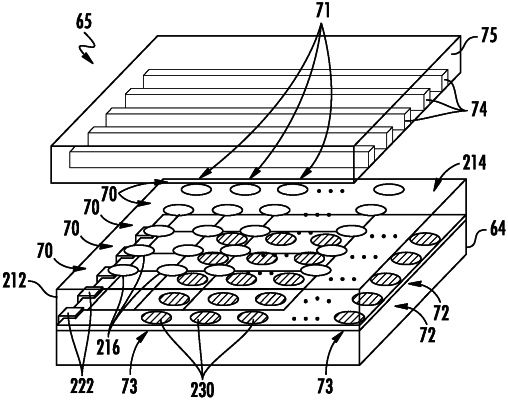| CPC G01N 21/553 (2013.01) [G01N 27/125 (2013.01); G01N 29/036 (2013.01); G01N 33/0034 (2013.01); G01N 2201/1296 (2013.01); G01N 2291/0256 (2013.01)] | 17 Claims |

|
1. A surface plasmon resonance (SPR) detection system, comprising:
a light propagation structure comprising a surface and a plurality of waveguides;
a plurality of metal layers comprising different metal oxide frameworks (MOFs) that are spaced apart from each other and have differing porosities and different binding affinities for a plurality of different target gases, the plurality of metal layers arranged in an array on the surface and exposed to a sample gas;
a plurality of light sources configured to provide respective beams through the plurality of waveguides to the surface that cause SPR of each metal layer;
an array of photodetectors, each associated with one of the metal layers, and configured to measure a reflection property of a reflection of one of the beams from an interface of the surface and its associated metal layer; and
a controller configured to determine an electrical property of the plurality of metal layers during the SPR, and determine whether any of the target gases are present in the sample gas based on at least one of the electrical properties and the reflection properties of the metal layers.
|